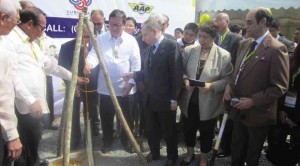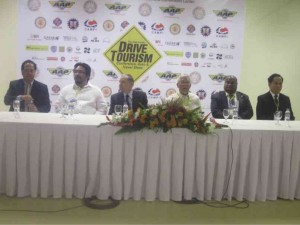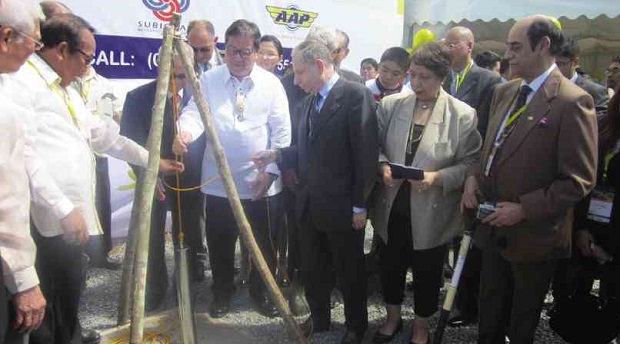
There are many kinds of tourism: Sports tourism, health and wellness tourism, “extreme adventure” tourism, dive tourism, cruising tourism, retirement tourism, and even English-as-a-second language tourism.
And now comes a new product: Drive Tourism.
Simply put, it’s all about people driving their own vehicles and visiting the tourist destinations—well known or off the beaten track—of the country.
Mina Gabor, president of the International School for Sustainable Tourism (ISST), put it this way: “Hey guys, get out and visit the country, and contribute to the local economy.”

The “product launching,” if one may call it that, was the recent Asia-Pacific Drive Tourism Conference held at the Subic Bay Exhibition and Convention Center, Subic Bay Freeport Zone.
It was presented by the Department of Tourism (DOT) and the Automobile Association of the Philippines (AAP), and organized by AAP Travel and ISST.
The theme was “Saving Lives, Saving Costs, Saving the Planet,” in support of the United Nations Decade of Action for Road Safety 2011-202.
The conference was followed by an Auto & Travel Show capped by a four-day Ifugao Drive Tour Caravan, which is an annual event of AAP Travel.

Drive Tourism goes by different names in other countries like Drive Tours or Road-Tripping. In the Philippines, it is also called caravaning as what participants did in the recent Ifugao drive tour.
Conference moderator Cito Beltran said the new program “is not just fun-drive tourism. It is all about road safety, jobs creation, investments. Tourism is a big deal and it helps the nation.”
Tourism Secretary Ramon Jimenez Jr. said “Drive Tourism is a new tourism product and we are determined to support it.”
He noted projections that “in six to 12 years you will be able to drive everywhere, anywhere in the Philippines, with the roads being built so fast.”
The secretary also said the government has set aside an P18 billion budget for building roads—“a phenomenon never seen before.”
“Every road trip you take is an invitation to see another road, but road accidents are increasing,” Jimenez pointed out.
He added, keynote speaker was Jean Dodt of France, president of Federacion Internationale de’l Automobile, who warned that “dangerous driving can turn the tourist trade into a nightmare. So wear seat belts.”
He revealed that “14,000 lives were lost in the Philippines last year and this is unacceptable. Many countries are now taking safety precautions seriously. Safety is a human right. Unless we strengthen our efforts, many more will die. Thirty percent of victims of road accidents are children.”
Dodt added: “We need to do more. We all need to work together. We cannot accept road deaths as inevitable. We have the responsibility for this.”
Performers during the conference included the Kontra-Gapi dancers and musicians under the baton of Edru Abraham, and the Sikada cultural troupe of Laguna. The Gamma Penumbra group showed a rousing, award-winning tourism documentary on the Philippines.
Also launched that day was the ground-breaking ceremony of the Subic Children’s Road Safety Park, with Subic Bay Metropolitan Authority Chair Roberto Garcia placing the time capsule into the ground.
The conference took place amidst a background of an exchange of tourists from other countries entailing land travel, and the inter-country road programs already being done in the Asean member states. There have been tourist buses from Malaysia to the Philippines, and buses from Zamboanga going to Malaysia.
“We cannot succeed without the private sector, all the stakeholders, the restaurants … Definitely there will be a gathering of all these people. The momentum has started,” Gabor concluded.









































